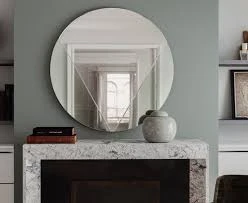

Exploring Low-E Tinted Glass Benefits, Applications, and Insights
In the evolving landscape of modern architecture and design, the need for energy efficiency and sustainability has never been more critical. One of the significant innovations in this arena is Low-E (low emissivity) tinted glass. This advanced glazing technology not only improves the overall aesthetic appeal of buildings but also plays a crucial role in energy conservation. In this article, we will explore what Low-E tinted glass is, its benefits, applications, and why it is becoming increasingly popular in contemporary construction.
Understanding Low-E Tinted Glass
Low-E tinted glass is a type of glazing that has a microscopically thin coating applied to its surface. This coating consists of metallic oxides that reflect infrared light while allowing visible light to pass through. The tinted aspect refers to the added color or hue that reduces the amount of sunlight penetrating the glass. This dual functionality makes Low-E tinted glass an attractive option for a variety of settings, particularly in regions with high solar radiation.
The tinting process serves several purposes it enhances privacy, reduces glare, and lowers the amount of heat entering a building. By reflecting a significant portion of solar energy, it helps maintain a comfortable indoor temperature, thereby reducing reliance on air conditioning systems.
Benefits of Low-E Tinted Glass
1. Energy Efficiency One of the most compelling reasons to choose Low-E tinted glass is its energy-saving potential. Buildings equipped with this type of glass experience reduced cooling energy costs, contributing to a lower environmental footprint.
2. UV Protection Low-E tinted glass effectively blocks harmful ultraviolet (UV) rays, which can cause skin damage and fade furnishings. This feature not only protects the occupants but also prolongs the lifespan of interior decorations and materials.
3. Enhanced Comfort By controlling solar heat gain, indoor spaces remain comfortable even during peak sunlight hours. This leads to a more consistent indoor climate, which is particularly important in offices, homes, and public buildings.
4. Aesthetic Appeal The tinted finish adds a modern touch to buildings, offering various shades to complement different architectural designs. This allows architects and designers to create visually stunning facades that also serve practical functions.

5. Glare Reduction Low-E tinted glass mitigates glare caused by direct sunlight. This is particularly beneficial in offices where excessive glare can impact productivity and comfort.
Applications of Low-E Tinted Glass
Low-E tinted glass finds application across a broad spectrum of sectors. In residential construction, homeowners are increasingly opting for this glass in windows and sliding doors due to its aesthetic and functional benefits. For commercial buildings, Low-E tinted glass is often used in large curtain walls, allowing for expansive views while enhancing energy efficiency.
Moreover, this type of glass is crucial in skyscraper designs, where minimizing solar heat gain is essential to reduce cooling loads in high-rise structures. Educational institutions and healthcare facilities also benefit from Low-E tinted glass, as it fosters a more pleasant indoor environment conducive to learning and recovery.
Considerations when Choosing Low-E Tinted Glass
When selecting Low-E tinted glass, several factors should be considered. The level of tint can affect both the aesthetic outcome and the thermal performance, so it’s essential to find a balance that meets your needs.
Additionally, not all Low-E coatings are created equal. It’s advisable to consult with experts in glass technology to ensure that you are getting a product that fits the specific climatic conditions of your location while aligning with your energy efficiency goals.
Conclusion
Low-E tinted glass represents a fusion of beauty, functionality, and sustainability in modern architecture. By reducing energy costs, protecting interiors from UV damage, and enhancing comfort, it emerges as a superior choice for anyone looking to build or renovate with longevity and ecology in mind. As building codes and consumer preferences continue to move towards greener solutions, Low-E tinted glass will undoubtedly play a pivotal role in the future of architectural design. Adopting this innovative glazing solution not only contributes to personal comfort but also champions the global endeavor towards environmental sustainability.